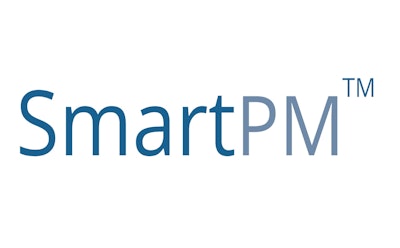
First, a definition. According to a recent article on LinkedIn, “Procurement in construction encompasses the strategic sourcing, purchasing, and management of resources vital to project execution. This encompasses a wide array of activities, including supplier selection, contract negotiation, and inventory control.” However, for the purposes of this article, procurement activities are defined as “the activities necessary to engineer, fabricate, and deliver materials and equipment in construction.”
While procurement is a crucial part of every construction project, it’s generally considered to be one of the most difficult elements to effectively plan, manage, and track. Generally, most procurement activities are scheduled as would be expected — by listing the series of activities necessary, assigning durations, and establishing logical relationships among the activities. Typical activities that are scheduled for each materials package include the process to submit, review, and approve shop drawings; materials procurement; and fabrication and delivery of materials.

Figure 1: Procurement Activities Schedule
Usually the first few activities (e.g., shop drawing procurement, along with the submit, review, approve sequence) are discrete enough in detail and short enough in duration to warrant entering an activity in the schedule to manage the process. However, far too often, procurement and fabrication activities have long durations that become problematic.
The Risks Associated With the Status Quo
Long-duration activities are challenging for two reasons:
- It’s generally more challenging to assign them an accurate status.
- It’s more difficult to accurately assign relationships to other, more discrete activities.
It’s even harder to accurately provide a status for fabrication activities because the work is being performed off-site. All the risks associated with this typical methodology being deployed on procurement schedules vastly increase the probability that the schedule will have an erroneous critical path, which typically results in overruns, delays, and disputes.
Often these activities are updated by a percentage that’s difficult to calculate, and the remaining duration adjusts to a figure that’s not accurate. Lengthy activities can easily overwhelm the critical path of the entire project, obscuring the view into what is critically delaying a project at the actual site. When this happens, the logic tie is often removed between the fabrication and delivery activity, decoupling the activity from the most important data — what it’s driving and when it’s due. Or, on the other hand, site teams sometimes like to see these things on the critical path because it explains a story of delay unrelated to their work.
Another issue that arises when adding many long-duration activities to an overall schedule: Doing so can skew the earned-value numbers that are calculated, particularly in schedules that are not resource-loaded (which is also the norm). Scheduling systems can calculate earned value; however, when a schedule lacks cost or resource data, the scheduling program must rely on duration data to calculate earned value.
When a schedule has many long-duration fabrication and delivery activities that represent a considerable proportion of “man days,” earned-value calculations of the actual installation work going on at the site — to which the real dollars are tied — can be skewed. This becomes problematic when attempting to accurately quantify earned value through the schedule data. Needless to say, the typical process utilized to schedule procurement promotes significant risk in construction, is often mismanaged, and can easily result in overruns and delays.
Moving Forward
What can be done to solve the challenges presented by the status quo? Convert the long-lead procurement and fabrication activities to milestones. Then, tie those milestones with logic and relationships to submit, review, and approve activities, and set the “lag” in the relationship equal to the estimated durations for the long-lead procurement in fabrication activities.

Figure 2: Procurement Schedule Milestones
This approach improves the situation, reducing the risk of mismanagement in several ways:
- In the case described in Figure 2, the only items that would need to be tracked (and potentially modified) are the vendor selection completion date and the delivery date. Once a vendor is selected, the clock starts for fabrication — and the due date is clear. The project manager would continue to communicate with the vendor and receive estimates on delivery and could manage the milestone with constraints (or adjustments in lag) based on that input.
- A milestone report can be prepared by creating filters, so the project manager can keep an eye on planned or adjusted dates when reaching out to vendors.
- Third, schedule procurement methodology solves the earned-value calculation issue and eliminates the risk of a fabrication activity overtaking the critical path erroneously. Better yet, the schedule can be designed to more accurately calculate when a delivery delay becomes critical toward delaying the project, which is a common issue at the center of delay discussions (and arguments).
Procurement activities often cloud the critical path and lead people to believe procurement is driving the project. The reality is that if procurement is truly driving the critical path past the foundation and structural activities, the schedule is likely not optimized — resulting in a heightened risk of delays and mismanagement.
Procurement and the Schedule
Procurement is an important part of a construction project. Therefore, logically tying procurement into the construction schedule is highly recommended, even though doing so makes an already complex process even more complex. The aforementioned process works, and works well, greatly reducing the risks associated with the inclusion of procurement activities. As a result, a better, less monotonous process results in better analytics — and fewer headaches at the end of a project.



